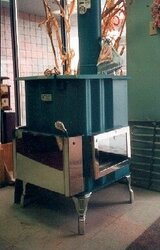This seems to be one of the lastest rages in
stove combustion technology, where the
exhaust is pulled-down throught the coals,
thus resulting in cleaner, more even burns.
I know that Harman & V.C. make such stoves.
Does anyone have any experience with such a
unit?? Are the burns indeed longer & more "even"
(much like a catalytic stove)??
Thanks,
Rob
stove combustion technology, where the
exhaust is pulled-down throught the coals,
thus resulting in cleaner, more even burns.
I know that Harman & V.C. make such stoves.
Does anyone have any experience with such a
unit?? Are the burns indeed longer & more "even"
(much like a catalytic stove)??
Thanks,
Rob


